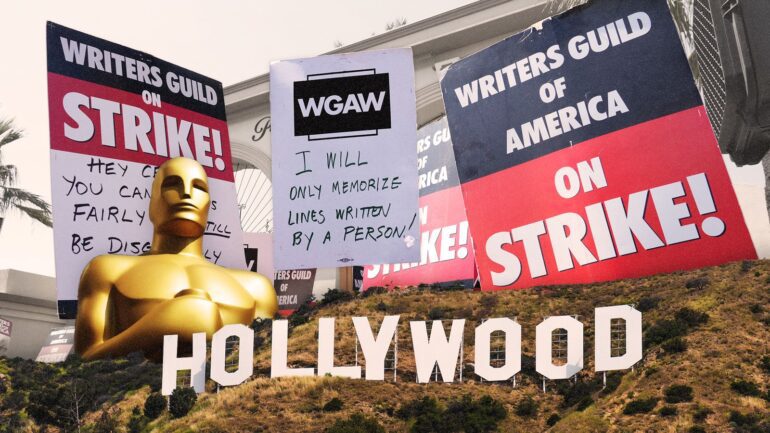TL;DR:
- Hollywood studios make AI language adjustments amid the 117-day SAG-AFTRA strike.
- Progress made in resolving AI-related issues central to negotiations.
- SAG-AFTRA leaders meet to assess the latest developments.
- Negotiations extend into late hours, signaling potential resolution.
- Key points include AI, streaming residuals, and minimum rates.
- Studios push for an urgent agreement to salvage the TV schedule.
- Future AI discussions are on the horizon for the next two and a half years.
Main AI News:
In a strategic move towards reaching a contractual resolution, Hollywood’s prominent studios are adapting their stance on artificial intelligence (AI) as they inch closer to ending the 117-day-long SAG-AFTRA strike. This pivotal development unfolded during a crucial meeting between union negotiators and representatives from the Alliance of Motion Picture and Television Producers (AMPTP) on Monday night. Within this meeting, both sides exhibited signs of progress in addressing the lingering concerns surrounding AI, which has dominated the discussions for the past ten days.
Subsequently, SAG-AFTRA leaders convened for a session early on Tuesday afternoon, assembling with the union’s dedicated negotiation committee. The expectation hinges on whether the recent advancements in AI negotiations will suffice to secure an agreement.
At precisely 10:30 p.m. on Tuesday, the committee notified its members of their extensive ten-hour session and pledged to continue discussions on the following day. They also indicated that the culmination of their deliberations is rapidly approaching, emphasizing their appreciation for the patience and support of the union membership during this critical phase.
On Monday afternoon, the union released a statement acknowledging that discrepancies still persisted regarding “several essential items,” with AI being a focal point. The union had presented its most recent formal proposal to the AMPTP on Monday morning, following an arduous 12-hour working session on Sunday.
Beyond AI considerations, the union remained engaged in crafting a mechanism for distributing a novel bonus concerning streaming residuals. The studios have offered to grant actors a substantial 100% bonus on their standard streaming residuals if they feature in one of the most-watched shows on a streaming platform.
The proposed agreement also encompasses a noteworthy surge in minimum rates, characterized by the studios as the most significant increment in four decades. This increase is projected to fall within the 7% to 8% range in most scenarios, a figure slightly below the 11% originally sought by SAG-AFTRA but notably higher than the 5% agreed upon in deals with the writers and directors unions by the AMPTP.
Notably, the AMPTP delivered its “last, best, and final” offer on Friday. Over the weekend, a substantial cohort of CEOs conducted a Zoom conference with Fran Drescher, the president of SAG-AFTRA, and Duncan Crabtree-Ireland, the chief negotiator, urging them to consider the offer.
The studios have underscored the urgency of reaching an agreement to salvage a portion of the broadcast TV schedule, as each passing day witnesses further postponement of feature film releases.
The extent to which the changes negotiated on Monday align with the union’s negotiation committee’s endorsement remains uncertain. The union was reported to have achieved consensus on certain intricate AI issues, notably addressing the protocol for AI consent in the unfortunate event of an actor’s passing. However, not all items on the union’s AI agenda were granted in this round of negotiations.
Conclusion:
The studios’ willingness to adapt AI language and address critical issues in negotiations signals a potential breakthrough in ending the prolonged SAG-AFTRA strike. This development could bring stability to the market, offering actors increased bonuses and higher minimum rates while ensuring the timely release of broadcast TV schedules and feature films, which is crucial for the entertainment industry’s recovery and future growth.

